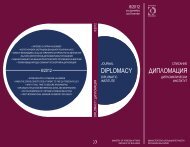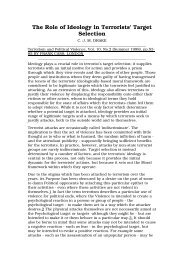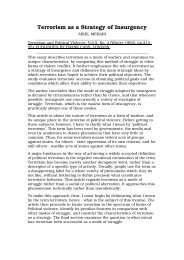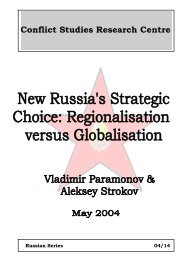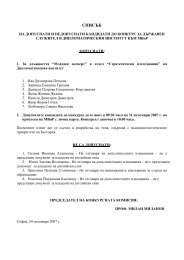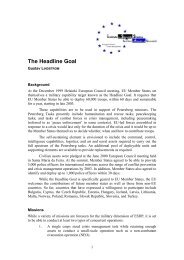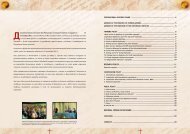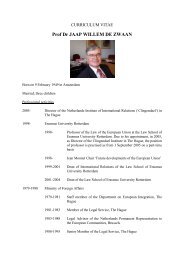The Myth of Ethnic Conflict: Chap 13 - Diplomatic Institute
The Myth of Ethnic Conflict: Chap 13 - Diplomatic Institute
The Myth of Ethnic Conflict: Chap 13 - Diplomatic Institute
You also want an ePaper? Increase the reach of your titles
YUMPU automatically turns print PDFs into web optimized ePapers that Google loves.
492 Maria Todorova<br />
livelihood. (<strong>The</strong> latter include former tobacco growers and workers<br />
in small industrial enterprises located in villages.) A considerable<br />
part <strong>of</strong> the rural population was employed in nearby towns (daily<br />
labor migration) and has been left unemployed following cuts in the<br />
urban industrial sector (especially the mining industry). 77 <strong>The</strong> laws<br />
voted by parliament about the restitution <strong>of</strong> land to former owners,<br />
although not yet implemented on a large scale, will leave considerable<br />
portions <strong>of</strong> the Muslim population in the plains practically landless.<br />
This is not the case in the mountain areas, but there it is the<br />
collapse <strong>of</strong> the tobacco industry, especially in southwestern Bulgaria<br />
and the Central Rhodopes, which has affected Bulgarian Muslims<br />
and Turks disproportionately since this hard and time-consuming<br />
occupation was almost entirely in their hands. 78 Likewise, the mining<br />
industry in the far southeast, with a heavy concentration <strong>of</strong> Turks<br />
and Bulgarian Muslims, is in total disarray. Finally, there was a special<br />
state policy <strong>of</strong> economic incentives—the so-called “border benefits”—which<br />
were poured into the border regions <strong>of</strong> the Rhodopes<br />
and thanks to which “the border population attained a standard <strong>of</strong><br />
living during the years <strong>of</strong> totalitarian rule which by far surpassed<br />
the traditional standards <strong>of</strong> the region.” 79<br />
<strong>The</strong> great demographic shifts accompanying the industrial<br />
revolution in Bulgaria after World War II, and particularly the drastic<br />
urbanization, left the Muslim population behind. <strong>The</strong> figures from<br />
the last census <strong>of</strong> 1993 show a mere 17 percent <strong>of</strong> members <strong>of</strong> the<br />
Turkish ethnic group living in cities. 80 Although there are no comparable<br />
data for the Bulgarian Muslims (since they were not identified<br />
as a separate group), it can be safely maintained that the share <strong>of</strong><br />
urban dwellers among them is statistically insignificant.<br />
Taking into account the reasons for unemployment, the National<br />
Statistical <strong>Institute</strong> has differentiated between two groups <strong>of</strong><br />
unemployed: those who were previously employed (about 75 percent)<br />
and those who had never before entered the workforce (about<br />
25 percent; these are school and college graduates and released military<br />
recruits). Further, municipalities have been divided into three<br />
groups, according to the nature <strong>of</strong> unemployment. <strong>The</strong> two districts<br />
with the highest percentage <strong>of</strong> unemployed who had been laid <strong>of</strong>f<br />
were Blagoevgrad (63.7 percent) and Smolyan (66.1 percent)—well<br />
over the national average <strong>of</strong> about 50 percent. 81 <strong>The</strong>se are the two



